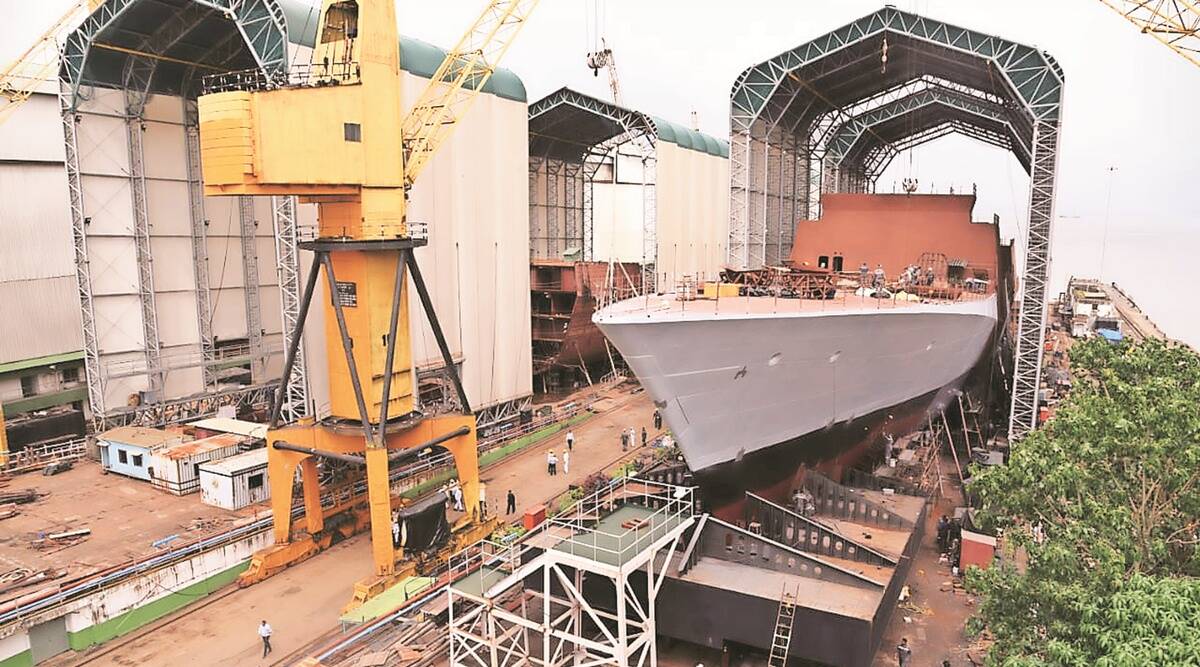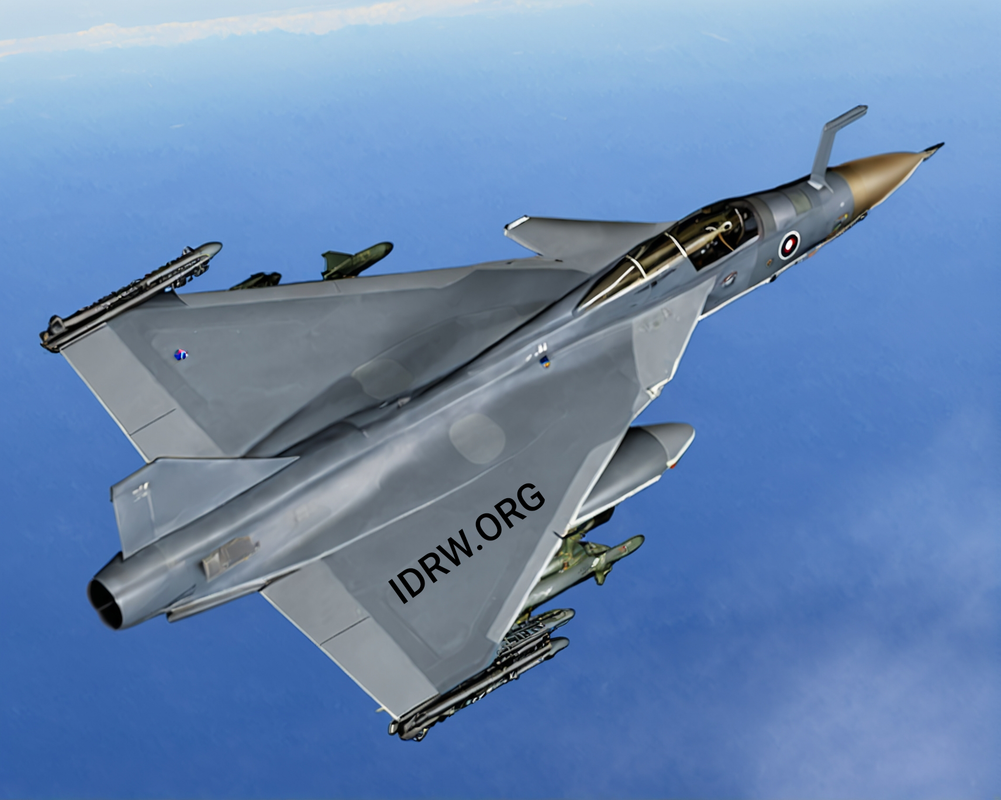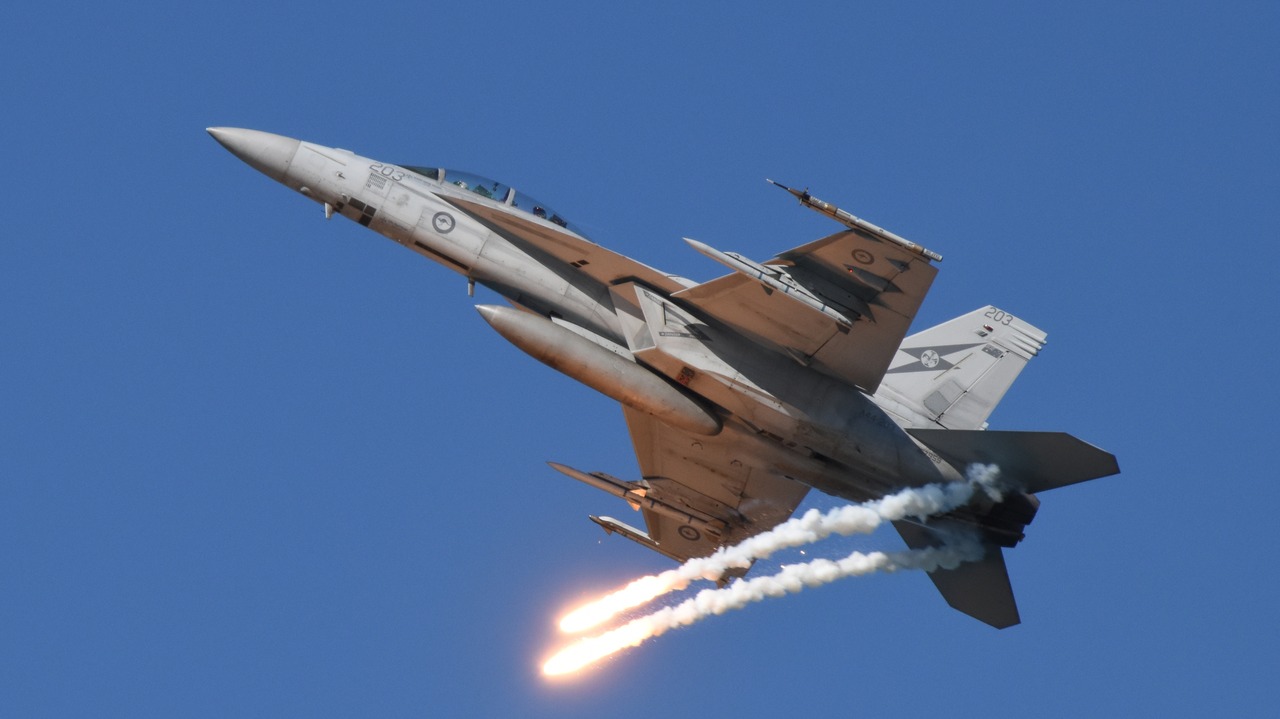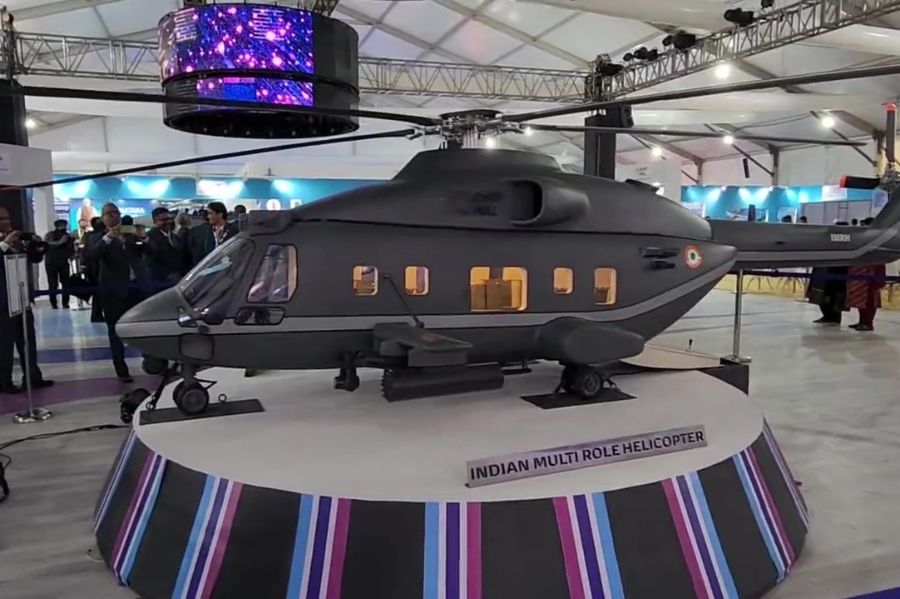SOURCE: IDRW.ORG


The civil variant of the Advanced Light Helicopter (ALH), manufactured by Hindustan Aeronautics Limited (HAL), has secured its first major contract, marking a significant milestone in expanding its footprint in the civil aviation sector.
State-owned Pawan Hans Limited successfully bid for the Oil and Natural Gas Corporation’s (ONGC) global tender, offering four HAL-made Dhruv-NG helicopters for offshore operations. The contract, valued at over ?2,141 crore for a 10-year period, was officially awarded earlier this month.
Continue readingSOURCE: IDRW.ORG


Indian shipyards are intensifying efforts to match the speed and efficiency of their European counterparts through the adoption of advanced construction techniques. One such method is the integrated construction approach, which has already shown promising results in streamlining shipbuilding processes in India.
This method involves the modular construction of ships where different sections like the hull, superstructure, and internal systems are pre-fabricated as large blocks. Each block, weighing approximately 250 tonnes, is meticulously engineered to include the necessary cabling and piping, ensuring that once assembled, these components align perfectly for welding and final integration. This approach not only reduces construction time but also enhances the quality and precision of the build.
Continue readingSOURCE: AFI


Recent satellite images have ignited a spirited debate within the Indian defense community, revealing what appears to be a mockup of a fighter jet at Bareilly Air Force Station in Uttar Pradesh. The central question among enthusiasts and experts alike: Is this a decoy of the Dassault Rafale or the indigenous HAL Tejas MkII?
The images, which have circulated widely on platforms like Reddit, show a fighter jet silhouette that has led to a split in opinions. One user pointed out, “What’s a decoy of a Rafale doing at Bareilly, they don’t even operate out of there,” highlighting the peculiarity since Bareilly is not known to host Rafale squadrons.
Continue readingSOURCE: AFI


India’s ambitious Project 77, India’s First Gen Nuclear attack submarine, is set to feature an entirely new hull design. This significant departure from the Arihant-class design reflects the need to accommodate technological advancements, including a larger and more powerful 190MW nuclear reactor, which demands increased internal space and structural modifications.
The Arihant-class submarines, with their relatively compact internal bulkheads, were designed to house the 83MW reactor. The new 190MW reactor for Project 77, developed by the Bhabha Atomic Research Centre (BARC), represents a dramatic increase in power output. This reactor not only ensures greater propulsion capabilities but also supports a longer operational range and more sophisticated onboard systems. However, its size necessitates a larger reactor compartment and redesigned bulkheads, which the Arihant-class cannot accommodate.
Continue readingSOURCE: AFI


As India continues to modernize its armed forces and bolster indigenous defence production, 2025 is poised to be a pivotal year for the defence sector. Key programs and policy initiatives are set to shape the country’s strategic and operational capabilities. Here are the top five things expected from India’s defence sector in 2025:
1. First Prototype of the Tejas MkII Rolls Out
Continue readingSOURCE: AFI


The year 2024 was momentous for India’s defence sector, marking significant milestones that enhanced the country’s security and technological capabilities. From new acquisitions to policy shifts, India took decisive steps toward strengthening its armed forces. Here are the top five defence developments in India in 2024:
1. First flight of Tejas Mk1A
In a major boost to indigenous defence manufacturing, the Indian Air Force began the induction of the Tejas Mk1A fighter jets, produced by Hindustan Aeronautics Limited (HAL). Featuring upgraded avionics, AESA radar, and enhanced weapons integration capabilities, the Tejas Mk1A represents a leap forward in India’s pursuit of self-reliance in fighter aircraft. The induction marks the beginning of a phased rollout of 83 jets ordered under a ?46,898 crore contract.
Continue readingSOURCE: AFI


In a recent incident that underscores the perils of friendly fire, a U.S. Navy F/A-18F Super Hornet, operating from the USS Harry S. Truman, was mistakenly shot down over the Red Sea. Both aircrew members ejected safely and were later rescued. This event is a stark reminder of the complexities of modern warfare and the need for robust systems to prevent such occurrences. The incident echoes a similar mishap within the Indian Air Force (IAF) in 2019, emphasizing the urgency for India to develop integrated systems to mitigate the risks of friendly fire.
The U.S. Navy’s friendly fire incident involved a guided-missile cruiser, the USS Gettysburg, mistakenly firing on the Super Hornet. The aircraft was part of operations aimed at countering Houthi rebel activities in the region. While the pilots were fortunate to be rescued with minor injuries, the incident raises questions about the identification, communication, and engagement protocols during complex operations.
Continue readingSOURCE: RAUNAK KUNDE / NEWS BEAT / IDRW.ORG


India’s strategic defense planning faces new challenges as Dassault Aviation’s production backlog for the Rafale fighter jet has ballooned to 228 aircraft. This significant increase in orders has raised questions about the timeline for India’s acquisition of additional Rafale jets, particularly for the Indian Navy’s naval variant, the Rafale M.
According to recent assessments, if Dassault manages to produce an average of 20 Rafales per year in 2024 and 2025, 188 aircraft remain to be delivered between 2026 and 2033. This scenario would necessitate a ramp-up in production to almost 24 aircraft per year from 2026 onwards. While this rate is considered achievable by some experts, given Dassault’s previous success in boosting production when catering to orders from Egypt, India, and Qatar, it still poses logistical and supply chain challenges.
Continue readingSOURCE: RAUNAK KUNDE / NEWS BEAT / IDRW.ORG
MGMP.jpeg)

A high-level committee tasked with evaluating the Indian Air Force’s (IAF) fighter jet acquisition strategy is reportedly considering repeat orders for 36 Dassault Rafale jets as an interim measure. This comes as a temporary solution before the long-awaited Multi-Role Fighter Aircraft (MRFA) program gains final approval.
The idea of additional Rafale purchases has been floated before. The late Chief of Defence Staff (CDS) General Bipin Rawat had advocated for batch orders to address the IAF’s immediate needs, a sentiment echoed by former IAF Chief RKS Bhadauria. However, this approach faced resistance from his successor, Air Chief Marshal V.R. Chaudhari, who believed that limited acquisitions might delay or undermine the MRFA program.
Continue readingSOURCE: RAUNAK KUNDE / NEWS BEAT / IDRW.ORG


The Indian Multi-Role Helicopter (IMRH), being developed for the Indian Army and Indian Air Force, is projected to cost approximately ?250 crores (29-30 million USD) per unit. This figure represents a 61% increase over the base price of the Russian Mi-17-5 helicopters that the IMRH will replace. Despite the higher cost, the IMRH promises to deliver advanced capabilities, enhanced safety, and superior technology, making it a worthwhile investment for India’s defense forces.
The IMRH project, a collaborative effort involving India’s Hindustan Aeronautics Limited (HAL) and France’s Safran, aims to equip the Indian Armed Forces with a helicopter that surpasses its predecessors in performance, safety, and technology.
Continue readingSOURCE: AFI


As Bangalore gears up for the Aero India 2025 airshow in February, the stage is set for a high-profile display of military prowess and technological advancement from both Russia and the United States. Media reports suggest an eager anticipation from Russia to showcase their fifth-generation Su-57 stealth fighter, following a similar strategy from the U.S. who brought the F-35A to the previous edition in 2023. This event could play a pivotal role in shaping India’s decisions regarding its future fighter jet program.
The Russian Su-57, also known by its NATO reporting name “Felon”, represents Russia’s answer to modern aerial combat demands. With its advanced stealth capabilities, super-maneuverability, and integrated modular avionics, the Su-57 is designed to rival the best in the world, including the American F-22 and F-35. Russian eagerness to display this aircraft at Aero India 2025 indicates a strong intent to rekindle or perhaps deepen defense ties with India, particularly in light of India’s ongoing quest for a fifth-generation fighter jet.
Continue readingSOURCE: AFI


In a significant stride towards enhancing the operational capabilities of the Indian Air Force (IAF), the Defence Metallurgical Research Laboratory (DMRL) and Hindustan Aeronautics Limited (HAL) at its Koraput facility have successfully extended the service life of the AL-31FP engine from 2,000 to 2,500 hours. Further research is underway with the ambitious goal of pushing this limit to 3,000 hours, marking a potential 50% increase over the original engine life. This article explores the implications and methodologies behind this achievement.
The AL-31FP is the heart of the IAF’s Sukhoi Su-30MKI fleet, one of the most formidable aircraft in its arsenal. Originally designed by the Russian Lyulka Design Bureau (now NPO Saturn), these engines are manufactured under license in India by HAL, showcasing an important aspect of the Indo-Russian defense collaboration.
Continue readingSOURCE: AFI


A recent war simulation conducted by a prominent US think tank projects a potentially prolonged conflict between India and China, centering around their contentious border in Ladakh and Arunachal Pradesh. The simulation suggests that if China initiates hostilities with the aim of a quick territorial gain, the conflict could escalate into a decade-long struggle unless China withdraws from the captured Indian territories.
China, leveraging its military might, is expected to launch a swift offensive to alter the border in its favor, reminiscent of the 1962 Sino-Indian War. The People’s Liberation Army (PLA) would aim for a short, decisive conflict to assert dominance in the region.
Continue readingSOURCE: AFI


In an era where information warfare and intelligence gathering are pivotal to national security, the Research and Analysis Wing (R&AW) of India has reportedly deployed its advanced Signals Intelligence (SIGINT) system, known as GB8002, to keep a vigilant eye on the activities in Bhutan and Bangladesh. This strategic move underscores India’s commitment to safeguarding its national interests and maintaining stability in its neighborhood.
The GB8002 system is an intricate network of electronic surveillance and intelligence-gathering capabilities, focusing on intercepting and analyzing signals for military, diplomatic, and strategic intelligence. This system is particularly adept at Signals Intelligence, which includes both Electronic Intelligence (ELINT) for understanding radar and other electronic emissions, and Communications Intelligence (COMINT) for intercepting and decoding communications.
Continue readingSOURCE: IDRW.ORG


The Indian Army’s ambitious plan to modernize its armored fleet with the Future Ready Combat Vehicle (FRCV) project is facing significant delays, compelling the Army to extend the service life of its aging T-72 tanks well into the 2030s. According to sources close to idrw.org, the FRCV project, which aims to replace the Soviet-era T-72 tanks with a new generation of main battle tanks (MBTs), remains stalled at the design stage.
The FRCV initiative is a critical component of India’s military modernization strategy, intended to equip the Army with tanks that feature advanced technology, superior mobility, enhanced survivability, and lethal firepower. The project requires that the new tanks be adaptable to various terrains and capable of meeting the challenges of contemporary warfare. Despite its importance, the project has not progressed beyond the initial phases due to bureaucratic and procedural hurdles.
Continue reading